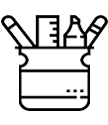The Story of Allegria’s Traditional Oya Lace
A variety of traditional lace techniques are not only still practiced, but also celebrated in Turkish culture today. One technique in particular, known as oya- a form of needle lace traditionally crafted by women, remains highly-regarded and is still widely used across Turkey. Not to be confused with dantel, or what we globally consider to be “lace” today, oya’s technique, and perhaps origin, are very different.
There is no question that lace has been popular in Turkey for several centuries. Scholars, though, are still at odds with regards to how lace reached Turkish culture in the first place. One theory posits that lace, as we know it today, arrived in Turkey after the 16th century, likely having traveled east from Venice, originating in Europe. Other scholars point to the fact that lace may have roots in the east, starting out as oya in Anatolia, then traveling west to Venice and changing shape along the way, and then finally finding its way back to Turkey in the form of lace, or dantel, as we know it. In other words, there is a possibility that lace could have roots in the traditional oya technique. Regardless of their origins and their differences, though, the fact remains that both lace and oya are still widely used Turkish handicrafts to this day.
The traditional oya technique, prevalent throughout the Allegria line of Letters From Bosphorus, distinguishes itself from lace with its flower, fruit, and foliage-filled motifs – some even bearing charming beaded embellishments! Usually, the motifs found in lacework take shape as the piece is being crafted. When crafting oya, however, the artist stays true to the shape of what the oya is meant to symbolize – each flower or leaf is depicted with care and planning, one after the next, to create a cohesive final product.
Different types of oya are traditionally named in a variety of different ways – making it only slightly easier to tell the many motifs and techniques apart! Quite often they are simply named after the type of needle or other tool used in their creation (e.g. crochet and netting needles), or after the town in which in they originated (like Bursa or Selanik). Or, sometimes, the appearance of the motif dictates the name of the oya– leaf, rose, hyacinth, pepper, and wheel of fortune are some examples.
In Turkey, lace (in its many forms) is an important component in the treasures found in a young girl’s hope chest. From bed linens and pillowcases to divan covers, tablecloths, and handkerchiefs, many handmade items are adorned with a delicate lace trim, adding both character and charm. Some pieces, like drapes and tablecloths, for example, are even carefully crafted with 100% lace.
Today, the craft of oya is still highly favored by women in Anatolia. Many girls still have elegant pieces trimmed with oya in their hope chest, crafted themselves or by a highly skilled craftswoman who has turned her love of the art of oya into her vocation.
Across time, Anatolian women and girls have used the art of oya to freely express themselves through their craft, using the colorful threads and beads of this medium to symbolize their surroundings, experiences, and feelings. Historically, wearing a headscarf with a certain color or motif of oya to reflect the social status of a woman was customary in Anatolian culture. Women would craft their oya-trimmed pieces to subtly, tell the world that they were engaged, married, pregnant, widowed, mourning, and even specifically if they were awaiting their betrothed who was away serving his military duty. That’s a lot to say with just a headscarf – all made possible by the magic of oya!
Passed down from generation to generation, the craft of oya was once widely used not only by women, but by men, too! Historically, the urban Külhanbeyi, rather disreputable street-wise men, would tie oya-adorned scarves given to them by their lovers around their hat, or külah. In Eastern and parts of inner Anatolia, even the tough-guy Zeybekguerilla fighters would proudly don scarves with ornate oya trim around their heads. The leader of the Zeybek, known as the Efe, would sport a particularly long oya-trimmed scarf, wrapped multiple times around his tall, stately külah, resulting in quite a distinguished costume!
Today, the art of oya has come a long way – both in Turkish culture and around the world. It’s much, much more than just a headscarf trim! Though now it may sometimes go by different names, oyai s frequently used today to not only adorn clothing and household pieces as it was in the past, but is also crafted on its own to create accessories such as delicate belts and handbags!
Alegria Blue Daisy Needle Lace Duvet Cover Set
1 Response
Leave a comment
Comments will be approved before showing up.
 info@lettersfb.com
info@lettersfb.com








 info@lettersfb.com
info@lettersfb.com
Rose McInerney
October 01, 2018
What a beautiful story! I had never heard of Oya – thanks for this wonderful vignette!